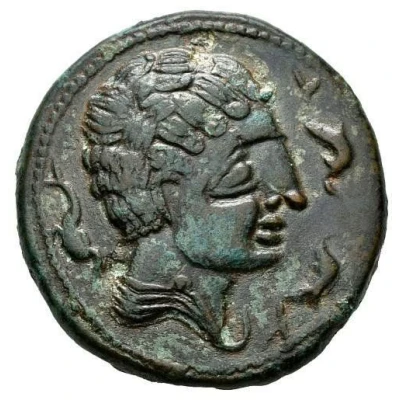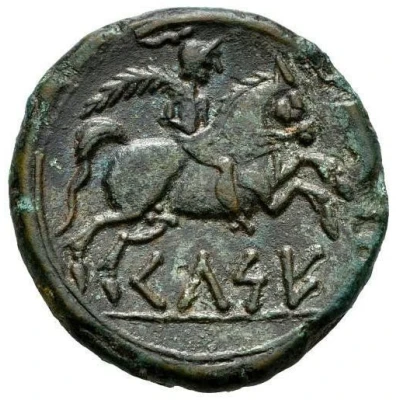


© Tauler & Fau Subastas
Unit 204 BC - 154 BC
| Bronze | 17.75 g | 31 mm |
| Issuer | City of Kelse (Sedetani people) |
|---|---|
| Type | Standard circulation coin |
| Years | 204 BC - 154 BC |
| Value | 1 Unit |
| Currency | Unit (first half of the 2nd century BC) |
| Composition | Bronze |
| Weight | 17.75 g |
| Diameter | 31 mm |
| Shape | Round (irregular) |
| Technique | Hammered |
| Orientation | Variable alignment ↺ |
| Demonetized | Yes |
| Updated | 2024-10-10 |
| Numista | N#334624 |
|---|---|
| Rarity index | 97% |
Reverse
Horseman galloping right, holding palm
Script: Iberian (Levantine)
Interesting fact
One interesting fact about this coin is that it features a unique blend of both ancient Egyptian and Indo-European influences in its design. The obverse side of the coin depicts a stylized image of the Egyptian goddess Isis, while the reverse side features a horse and rider, which is a common motif in Indo-European art. This blending of cultural influences reflects the complex history and cultural exchange that occurred during the Sedetani people's era.